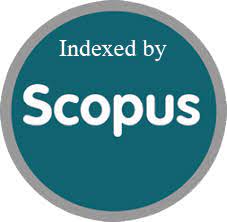Retrospective Analysis of the Outcomes of Children with Congenital Diaphragmatic Hernia Treated with Different Surgical Techniques
Keywords:
Congenital diaphragmatic hernia, thoracoscopic repair, open repair, neonatal surgery, patch repair, postoperative outcomesAbstract
Background: Congenital diaphragmatic hernia (CDH) is a life-threatening neonatal condition characterized by a defect in the diaphragm allowing abdominal organs to herniate into the thoracic cavity, leading to pulmonary hypoplasia and respiratory distress. Surgical repair remains the definitive treatment, performed either through open or thoracoscopic approaches. This study aims to evaluate the outcomes of open versus thoracoscopic CDH repair in neonates at a tertiary care center.
Methods: A retrospective observational study was conducted on 40 neonates diagnosed with CDH and treated surgically between January 2021 and December 2024. Clinical data including demographics, hernia characteristics, “surgical approach, intraoperative findings, complications, length of hospital stay, and mortality were collected and analyzed.
Results: Among the 40 patients, 30 (75%) underwent open repair and 10 (25%) underwent thoracoscopic repair. Left-sided hernias were predominant (80%), with a male-to-female ratio of 1.35:1. Patch repair was required in 6.7% of cases, mostly in the open repair group (75%). The overall mortality rate was 15%, with higher mortality observed in the open group (16.7%) compared to the thoracoscopic group (10%). The average hospital stay was significantly shorter in the thoracoscopic group (14 days) compared to the open group (21 days). Hernia recurrence occurred in 10% of cases, exclusively in the thoracoscopic repair group. Postoperative complications were more frequent in the open repair group (20%) than the thoracoscopic group (13%).
Conclusion: Thoracoscopic repair of CDH is a safe and effective alternative to open repair, associated with lower mortality, shorter hospital stay, and fewer postoperative complications. However, the risk of recurrence may be higher, warranting careful patient selection and long-term follow-up.
Downloads
Metrics
References
Montalva, L., Carricaburu, E., Sfeir, R., Fouquet, V., Khen-Dunlop, N., Hameury, F., ... & Bonnard, A. (2022). Anti-reflux surgery in children with congenital diaphragmatic hernia: A prospective cohort study on a controversial practice. Journal of Pediatric Surgery, 57(12), 826-833.
Li, H., Zhao, S., Wu, C., Pan, Z., Wang, G., & Dai, J. (2022). Surgical treatment of congenital diaphragmatic hernia in a single institution”. Journal of Cardiothoracic Surgery, 17(1), 344.
Cioci, A. C., Urrechaga, E. M., Parreco, J., Remer, L. F., Cowan, M., Perez, E. A., ... & Thorson, C. M. (2021). One-year outcomes of congenital diaphragmatic hernia repair: factors associated with recurrence and complications. Journal of pediatric surgery, 56(9), 1542-1546.
Quigley, C. P., & Folaranmi, S. E. (2023). A systematic review comparing the surgical outcomes of open versus minimally invasive surgery for congenital diaphragmatic hernia repair. Journal of Laparoendoscopic & Advanced Surgical Techniques, 33(2), 211-219.
Abramov, A., Fan, W., Hernan, R., Zenilman, A. L., Wynn, J., Aspelund, G., ... & Duron, V. (2020). Comparative outcomes of right versus left congenital diaphragmatic hernia: A multicenter analysis. Journal of pediatric surgery, 55(1), 33-38.
Politis, M. D., Bermejo-Sánchez, E., Canfield, M. A., Contiero, P., Cragan, J. D., Dastgiri, S., ... & Nembhard, W. N. (2021). Prevalence and mortality in children with congenital diaphragmatic hernia: a multicountry study. Annals of epidemiology, 56, 61-69.
Pagliara, C., Zambaiti, E., Brooks, G., Bonadies, L., Tognon, C., Salvadori, S., ... & Leon, F. F. (2023). Congenital Diaphragmatic Hernia: Perinatal Prognostic Factors and Short-Term Outcomes in a Single-Center Series. Children, 10(2), 315.
Carmo, R. I. S. D., Peixoto-Filho, F. M., Bueno, A., Fonseca, M., & Gomes Junior, S. C. D. S. (2020). Prognostic factors of death in children during the first year of life due to congenital diaphragmatic hernia: analysis of a hospital cohort from 2005 to 2015. Jornal de Pediatria, 96, 569-575.
Fuyuki, M., Usui, N., Taguchi, T., Hayakawa, M., Masumoto, K., Kanamori, Y., ... & Okuyama, H. (2021). Prognosis of conventional vs. high-frequency ventilation for congenital diaphragmatic hernia: a retrospective cohort study. Journal of Perinatology, 41(4), 814-823.
Zhao, S., Pan, Z., Li, Y., An, Y., Zhao, L., Jin, X., ... & Wu, C. (2020). Surgical treatment of 125 cases of congenital diaphragmatic eventration in a single institution. BMC surgery, 20, 1-6.
Okawada, M., Ohfuji, S., Yamoto, M., Urushihara, N., Terui, K., Nagata, K., ... & Japanese Congenital Diaphragmatic Hernia Study Group. (2021). Thoracoscopic repair of congenital diaphragmatic hernia in neonates: findings of a multicenter study in Japan. Surgery today, 51, 1694-1702.
Morche, J., Mathes, T., Jacobs, A., Pietsch, B., Wessel, L., Gruber, S., ... & Pieper, D. (2020). Relationship between volume and outcome for surgery on congenital diaphragmatic hernia: a systematic review. Journal of Pediatric Surgery, 55(12), 2555-2565.
Lum, L. C. S., Ramanujam, T. M., Yik, Y. I., Lee, M. L., Chuah, S. L., Breen, E., ... & Gan, C. S. (2022). Outcomes of neonatal congenital diaphragmatic hernia in a non-ECMO center in a middle-income country: a retrospective cohort study. BMC pediatrics, 22(1), 396.
Gerall, C. D., Stewart, L. A., Price, J., Kabagambe, S., Sferra, S. R., Schmaedick, M. J., ... & Duron, V. P. (2022). Long-term outcomes of congenital diaphragmatic hernia: a single institution experience. Journal of Pediatric Surgery, 57(4), 563-569.
Zani, A., Chung, W. K., Deprest, J., Harting, M. T., Jancelewicz, T., Kunisaki, S. M., ... & Keijzer, R. (2022). Congenital diaphragmatic hernia. Nature Reviews Disease Primers, 8(1), 37..
Downloads
Published
How to Cite
Issue
Section
License

This work is licensed under a Creative Commons Attribution 4.0 International License.
You are free to:
- Share — copy and redistribute the material in any medium or format
- Adapt — remix, transform, and build upon the material for any purpose, even commercially.
Terms:
- Attribution — You must give appropriate credit, provide a link to the license, and indicate if changes were made. You may do so in any reasonable manner, but not in any way that suggests the licensor endorses you or your use.
- No additional restrictions — You may not apply legal terms or technological measures that legally restrict others from doing anything the license permits.






